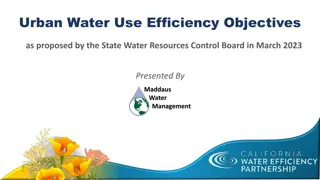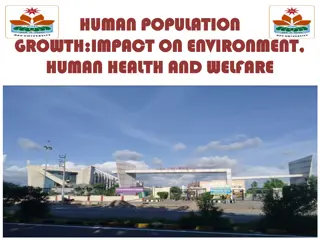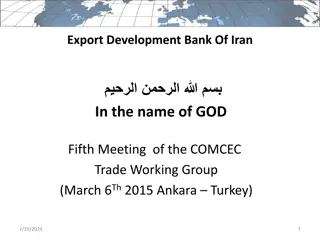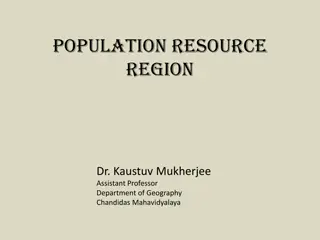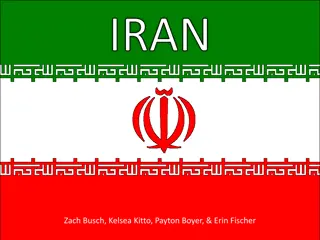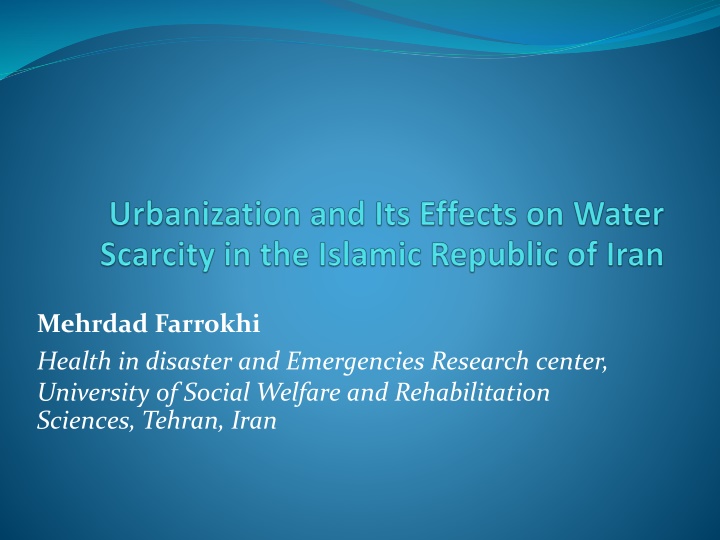
Water Resources and Population Growth in Iran
Iran's water sector faces challenges due to rapid population growth, urbanization, industrialization, and climate change-induced drought. The country's limited water resources and the need for sustainable development necessitate strategic planning and policies to manage water effectively.
Download Presentation

Please find below an Image/Link to download the presentation.
The content on the website is provided AS IS for your information and personal use only. It may not be sold, licensed, or shared on other websites without obtaining consent from the author. If you encounter any issues during the download, it is possible that the publisher has removed the file from their server.
You are allowed to download the files provided on this website for personal or commercial use, subject to the condition that they are used lawfully. All files are the property of their respective owners.
The content on the website is provided AS IS for your information and personal use only. It may not be sold, licensed, or shared on other websites without obtaining consent from the author.
E N D
Presentation Transcript
Mehrdad Farrokhi Health in disaster and Emergencies Research center, University of Social Welfare and Rehabilitation Sciences, Tehran, Iran
out line introduction Population review Urbanization rate Water consumption trend Conclusion
Introduction Water is a critical natural resource, It has always played a vital role in progress and development. The first known human empire was established thousands of years ago in the southwestern part of Iran water has played a key role in any social changes that have taken place in this country. Iran is a dynamically developing country within the 5thfive-year plan framework the Ministry of Energy targets was full coverage of urban water supply in 2009. Also 88% of the rural population, whereas this number shall be increased to 100% until 2025
Introduction Iran, with an area of 165 million hectares (Mha), is located in a semiarid region of the Middle East. The average amount of precipitation over the country is 252 mm/year, which is less than one-third of the world average. While annual precipitation usually exceeds 2,000 mm in some of the northern parts of the country, it may be less than 20 mm in desert areas. Renewable water resources: 117bcm
Introduction The main Factors Effected on Water Sector in Iran: Rapid Population Growth, immigration of millions of Afghans, Urbanization, industrialization, drought from climate changes. Population growth in Iran is high. The highest recorded rate of 3.9 percent occurred in 1986. family planning programs during the years of 1986-1996 contributed to a lower rate of population growth of 1.45 percent in that decade. population growth has been limited to urban areas, whereas rural areas have been characterized by shrinking population numbers since that time.
Population growth Iran today counts more than double the number of inhabitants than 30 years ago
Population Development in Urban and Rural Areas
Population Growth in Urban and Rural Areas, in comparison to five years before
Average Annual Migration Rate to Urban Areas in Iran
Number of cities and villages, their growth rate
Population density in Iranian Provinces The most densely provinces: Tehran, Guilan, Mazandaran
Water Availability and Use in Iran Component Volume (bcm) Percent of Total Precipitation 413 100 Evaporation 283 70 Renewable water 120 30 Surface water 105 Groundwater 25 Total water use 87.5 100 Agriculture 82.0 94.25 Domestic 4.7 4.75 Industry (etc.) 0.8 1
Water Consumption at a Glance agriculture: 11% of GDP agriculture: 11% of GDP
Renewable Fresh Water Annual Renewable Water Availability (cubic meter/capita) Year 1956 7000 2007 1900 2020 1300
Climate and Climate and Precipitation Iran s climate varies from region to region: The winter temperatures in the mountainous areas of the north-west drop as low as -29 C The Khuzestan Plain has extremely hot humid summer with an average temperature of about 35 C Most of the interior plateau has a dry climate, but the winters are mild and pleasant. Iran has 8 climatic zones varying from very dry to very wet. The average annual precipitation is 250 mm and the range (varies from 50 mm to more than 1600 mm ) Based on the average annual precipitation, Iran s climate is classified among the semi-arid and arid.
Water Consumption Vision 90 million population Consumption Increase due to urbanization and improved welfare Water Demand WS 2021= 1 . 3 WS 2000 We need 30 bcm more
What We Can Do Improvement Water uses efficiency specially in agriculture Immigration back to rural areas Enhancing the uses pattern Increasing the Storage Capacity Modern Water Harvest Methods Water & Wastewater Recycle




